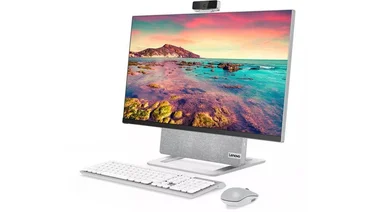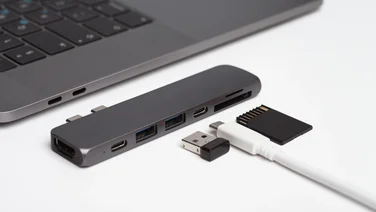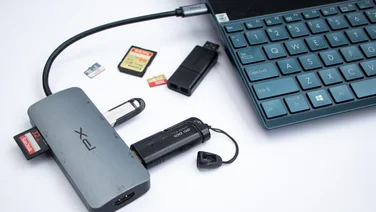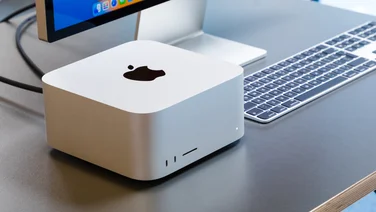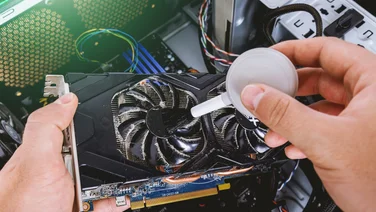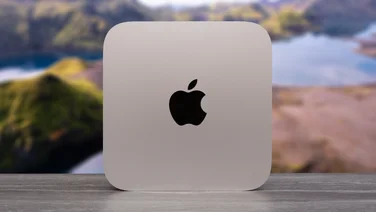To help us provide you with free impartial advice, we may earn a commission if you buy through links on our site. Learn more













We’ve long been fans of the Raspberry Pi. We’ve used the £30 mini PC for all kinds of projects, from making a CCTV system to building a multiroom audio receiver on the cheap.
The Pi is particularly well suited to such embedded applications due to its tiny size and sub-4W power draw. However, although it can be used as a desktop computer, and we have even heard of people using the Pi for some fairly complicated desktop publishing, it always felt compromised. The feeling was that the Pi was “impressive for a £30 computer” rather than in its own right.

The main problem was that the original Pi’s 700MHz single-core processor just wasnt quite quick enough to run applications such as LibreOffice smoothly, or for complicated modern web pages. Step forward the Raspberry Pi 2, which improves matters significantly with a quad-core processor and 1GB RAM. Best of all, a slice of Pi is still just £30.
The new Broadcom BCM2836 system-on-chip, which handles the Pi’s video, audio and processing, among other things, has also had a speed bump to 900MHz. The Pi is otherwise unchanged from the B+ model; you still get four USB ports, HDMI, Ethernet, a 3.5mm combination composite video and stereo audio jack, a microSD card slot and, of course, the all-important camera interface and 40 general-purpose input/output pins to plug in resistors, LEDs or whatever your current project requires.

This means that you should be able to swap your old Pi for a new one without having to spend hours modifying your Python scripts to get your projects working again. Processor aside, in terms of hardware it’s business as usual for the Pi 2. HDMI is the best connection to use to plug into a display; the combination AV port is really designed for the developing world where CRT TVs are still commonplace. If you dont have an HDMI-equipped monitor or TV, you can plug into most PC monitors with an HDMI to DVI adaptor (about £4 from Maplin) and use the 3.5mm jack output foryour sound.

Four USB ports give you plenty of space for a keyboard and mouse and, if you dont want to use the Ethernet port, a wireless adaptor; the Pi Hut USB Wi-Fi Adapter is £8 from Amazon. We’d highly recommend using a 2A phone or tablet charger to power the Pi instead of the sub-1A chargers that still ship with most phones, in order to make sure you have enough power for your peripherals. We found that the Pi still couldnt provide enough power to spin up an external bus-powered mechanical hard disk, so you’re best off sticking with flash drives or hard disks with their own power supply. You’ll also want a fast microSD card for snappy performance with the Pi’s operating system we had good results with a Class 10 16GB Sandisk Ultra, which is £6.50 from www.ebuyer.com.
When it comes to operating systems, you have a few choices for the Pi. The best way to experiment is to download NOOBS from www.raspberrypi.org/downloads, which gives you a choice of several operating systems to install. Most people should start with the Debian-based Raspbian, which is simple to use, but more adventurous types can use the highly configurable Arch Linux or blow their minds with RISC OS. You can also use OpenELEC to turn the Pi into a highly efficient media centre more on that below.
Running Raspbian on a Pi 2 and B+ side by side, the performance difference is obvious. For a start, with our Class 10 microSD card, the B+ took 53s to boot to the Raspbian Linux desktop, but the Pi 2 did it in 34s. We also ran Roy Longbottom’s Whetstone test on both models see www.raspberrypi.org/forums/viewtopic.php?f=31&t=44080. The Pi B+ scored 263 Millions of Whetstone Instructions Per Second (MWIPS) while the Pi 2 managed a huge 525 MWIPS.

^ There’s plenty you can get done in Raspbian thanks to the extra power of Pi 2
This extra grunt makes a big difference in real-world use. The Pi 2 has moved beyond being a vehicle for embedded applications and for learning basic programming to being very nearly a proper everyday computer. LibreOffice runs far better on the new model, for example; LibreOffice Writer keeps up properly with your typing and it’s now feasible to make and manipulate charts in Calc. We could even just about edit large images in Gimp.
Web pages were a big Achilles heel for previous Pi models and, while the Pi still wont replace your PC (or even tablet) for browsing smoothness, its far more usable. The graphics-heavy www.expertreviews.co.uk takes around five seconds to load and render on a powerful PC, but a glacial two minutes on a Pi B+. On the Pi 2, the page loads in a far more manageable 20 seconds.
Of course, sometimes you’re reminded that your computer is a £30 credit card with passively-cooled components. For example, multitasking performance is pretty dire; if you’re installing software with aptitude, for example, you can forget about doing much else at the same time. We found it impossible to play video files, as the Pi’s VLC build seems to be broken. We also couldnt find a way to play YouTube videos, either in-browser or with dedicated software such as MiniTube. The list of things the Pi can’t do is growing shorter, but its not quite ready to be your only computer. The fact that it’s now even in contention is impressive enough.
There is a way to get around the multimedia problems, and that’s to use the OpenELEC operating system. This is an OS that boots straight into the Kodi media centre application (formerly XBMC). Bear in mind that the OpenELEC version available through NOOBS and from the Raspberry Pi site is out of date; you’ll need to get the latest Raspberry Pi image, and install it with Win32 Disk Imager. Kodi’s attractive interface runs more smoothly on the new Pi and we were soon playing music and video from our Synology NAS to the Pi over UPnP, all controlled by an Android phone with the Synology DS audio and DS video apps. Audio worked flawlessly, but we found we sometimes had to disconnect from the Pi and reconnect before a video would play. Nonetheless, the Pi is a great way to play music and video through your TV or Hi-Fi, all while drawing just 4W from the mains.

^ OpenELEC boots straight into Kodi – or XBMC as you might know it
With the Pi 2, the Raspberry Pi has moved beyond its hobbyist roots. It’s still perfect for embedded applications and learning to program, but is now powerful enough to be a real desktop computer, too. Considering it’s still incredibly cheap, it’s even more of a bargain than it was before. It wins a Best Buy award.

